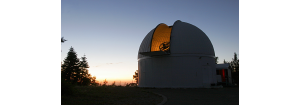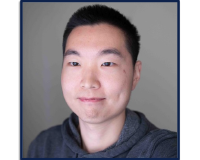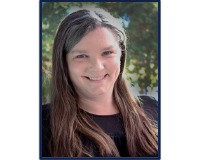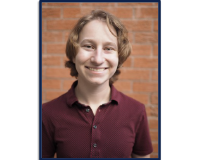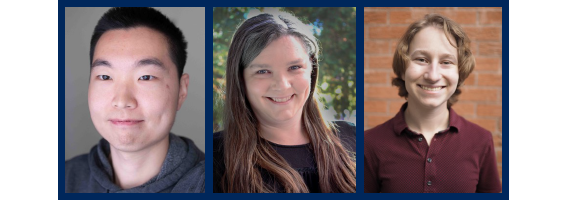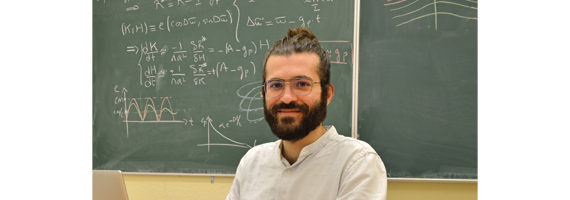Congratulations to Dr. Antranik Sefilian, who will be joining Steward Observatory as a 2024 51 Pegasi b Fellow, mentored by Department of Astronomy Associate Professor Kaitlin Kratter. During his time at Steward Observatory, Sefilian will be decoding the gravitational interplay between planets, and the remnants of their formation, to illuminate the dynamics that sculpt planetary systems. “We are really excited to host Dr. Sefilian here in Arizona, as he will bring together multiple research groups,” Kratter says. “His theoretical work on debris-disks links those of us who study disk dynamics with our colleagues at the forefront of observational science with JWST.
Peculiar Orbits and Distant Particles
In the story of planet formation, debris disks stand as enduring relics. These expansive rings of rubble offer astronomers a window into each tumultuous chapter of planetary systems’ formation. By probing these reservoirs of cosmic clues, Sefilian reveals fresh insights into planetary system formation, evolution, and architecture.
Sefilian’s first debris disk study was inspired by the peculiar orbits and clustering of some objects in the Kuiper Belt, a doughnut-shaped region of icy objects beyond the orbit of Neptune. Contrary to the prevailing scientific view attributing their features to a missing Planet Nine (a hypothetical ninth planet in the outer region of the Solar System), he provided theoretical models showing how the collective gravity of Kuiper Belt objects could account for the observations.
“Scientific progress often hinges on serendipitous events,” Sefilian says. “The emergence of the Planet Nine hypothesis sparked a pivotal redirection of my focus.”
Like the pull of distant particles, Sefilian’s own career has been guided by serendipity. He grew up in Lebanon, where opportunities in astrophysics are scarce. Yet, he found mentorship from the only theoretical astrophysicist working in planetary dynamics in the country.
During his fellowship, Sefilian will continue exploring gravitational interactions between planets and debris disks, collaborating with observers to test his predictions. His models can be adapted to many debris disk scenarios and simulate their evolution with unprecedented speed and adaptability. From unraveling the structures of debris disks, including warps and elliptical features, to simulating colliding debris, Sefilian’s research promises to transform our understanding of planetary systems.
Sefilian received a Ph.D. in applied mathematics and theoretical physics from the University of Cambridge in Spring 2022. Prior to starting his fellowship, Sefilian will continue to work as an Alexander von Humboldt fellow at the University of Jena in Germany.
A Fellowship for Experimental Planetary Research
Established in 2017, the Heising-Simons Foundation 51 Pegasi b Fellowship is named for the first exoplanet discovered orbiting a Sun-like star. In the growing field of planetary astronomy, scientists study objects both within and beyond our solar system, bridging planetary science and astronomy. From improving our understanding of planetary system formation and evolution, to advancing new technologies for detecting other worlds, 51 Pegasi b Fellows make a unique contribution to the field. This year, the fellowship provides eight postdoctoral scientists with the opportunity to conduct theoretical, observational, and experimental research in planetary astronomy.
“The 51 Pegasi b fellowship is a unique opportunity aimed at helping to launch the careers of young scientists working in the field of planets and planet formation,” Kratter says. “The Heising-Simons foundation has created a very supportive system, combining competitive stipends and research budgets with exceptional professional development skills in the form of workshops and on-one-on mentoring relationships. We are very lucky here in Arizona to have the opportunity to host another fellow through this program.”
A Pivotal Time for Science at Steward
Sefilian’s research interests come at a time when the capabilities of cutting-edge telescopes will allow the postdoc to test his theories against real-life observations. It’s an especially connective time to be at Steward Observatory, which is home to the MIRI and NIRCam team leaders who developed the infrared instrumentation for the James Webb Space Telescope (JWST). “With the unprecedented capabilities of instruments such as JWST and ALMA, the boundaries between theory and observations are rapidly dissolving,” Sefilian says. “This convergence promises to test many of my theoretical predictions, and that’s really exciting.”






